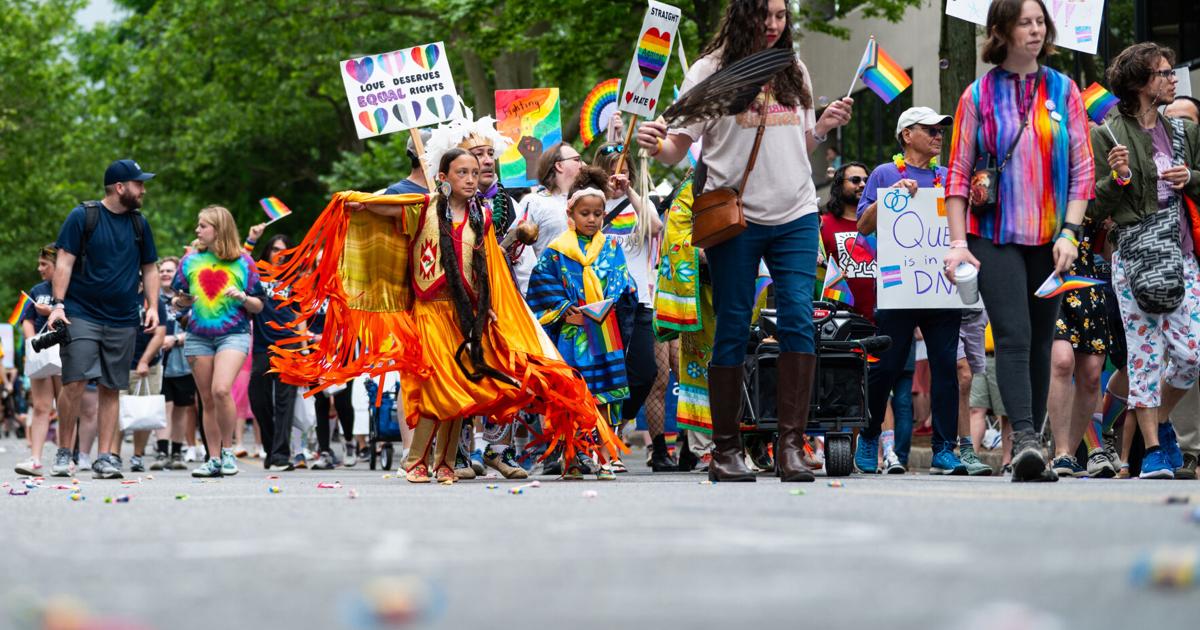Throughout June, allies show their support for the LGBTQ+ community through social media campaigns, statements of solidarity and rainbow themed merchandise. However, some advocates are calling for this support to extend beyond Pride month and manifest in different ways.
Penn State’s Center for Gender and Sexual Diversity (CGSD) is a group composed of students and staff that are asking: “What does it mean to be an ally when no one is watching?”
“Genuine allyship shows up in how people act,”Kate Rawson, assistant director of CGSD said. “Come to Pride events. Use inclusive language. Talk to your lawmakers.”
While suggesting ways for people to engage in allyship through more public means, she also mentioned how to be an ally on a personal level.
“Ask the people in your life what support actually looks like for them,” Rawson said. “Every person needs something different.”
Rawson is among a group of educators and students calling for a more consistent form of support that doesn’t vanish when the month ends or the parades are over. Alongside her colleagues, she works to equip allies with the language, resources and context to move beyond symbolic gestures.
Small shifts in language can also signal large changes in mindset, according to Rawson. One example she suggested was using phrases like “everyone,” “friends” or “colleagues” as opposed to “ladies and gentlemen.”
“To be an ally to the community, I specifically look for active engagement.” Sam Brooks, a fourth year student studying digital art and media design said. “A rainbow sticker is nice, but it’s also understanding, actively trying to understand why these symbols even matter. Allyship isn’t a passive label, it’s an active pursuit of celebration, education and community.”
Brooks said allyship often begins with curiosity and humility.
“Understanding builds empathy, and empathy creates tight knit community bonds,” Brooks said. “Don’t be afraid to learn. Don’t be afraid to engage.”
To help foster learning, the Center offers year-round programming, including its “Queer Voices” peer-education group and “Safer People, Safer Places” workshops. These sessions give participants the opportunity to hear personal stories, discuss inclusive practices and reflect on how to better support LGBTQ+ people in their workplaces, classrooms and communities.
One foundational practice Brooks said is sharing pronouns, something which he models in both professional and social settings.
“I’ll introduce myself and say, ‘Hi, I’m Sam, I use he/him pronouns,’ to model that it’s okay to share,” Brooks said. “It signals that this is a safe space.”
That kind of modeling, Rawson added, helps normalize inclusion.
“Even just coming to Pride events and being visibly present as an ally sends a message,” Rawson said. “We always tell folks on campus, come to our events even if you’re straight. We need our allies in the room to keep this work going.”
Outside of campus, LGBTQ+ organizations across the state are making similar appeals. Michel Lee Garrett, a board member of Centre LGBT+, an organization serving central Pennsylvania, said the stakes are especially high this year.
“We, the queer community, are currently in a moment of profound difficulty, profound challenge and profound fear,” Garrett said. “Anti-LGBT forces are working tirelessly to put policies and legislation into place that would rip away life-saving gender-affirming medical treatment and undo much — if not all — of the progress that the queer community has made over the last number of decades.”
She called for a more courageous and public form of allyship, saying people who are willing to show up, be visible and push back anti-LGBT speech and actions are needed.
“Passive allyship, allyship that will listen to others spout anti-LGBT rhetoric and not push back against it, is not allyship. It is complicity,” Garrett said.
Garrett urged supporters to speak up, whether in private conversations or public spaces.
“We need people who speak up in their families, in their workplaces, in their places of faith,” Garrett said. “We need people who are calling their elected officials. We need people who are showing up to public meetings. We have gotten to where we are as a community by being loud and proud and visible, and in this moment, perhaps more than ever before, we need our allies to be loud and proud and visible.”
She also emphasized the importance of respectful language and the willingness to learn, while also saying it’s okay for people to have questions and make mistakes. Garrett said the goal of inclusive language isn’t to make people fear saying the wrong thing, but to support and uplift marginalized people.
When it comes to terminology, Garrett acknowledged the complicated legacy of the word “queer.”
“Some people have a visceral reaction to it because of its history, but many queer people have reclaimed the term and use it very, very proudly,” Garrett said. “Queer encompasses everybody. We are all part of the queer family, and that sort of openness — that sort of ‘open-armed-ness’ of the term — is something that I think a lot of us respond to.”
Still, Garrett cautioned allies to be mindful.
“Some people don’t necessarily love it when allies use the term ‘queer’ because of its history,” Garrett said. “But it has become a term of pride and endearment (for some).”
Garrett also spoke about newer, inclusive terms like “gender-expansive”, which she described as a broad umbrella term for identities that move beyond the traditional gender binary.
“Gender-expansive people have existed throughout history, across cultures, across time,” Garrett said, noting that they always have and always will.
For allies looking to educate themselves without placing additional emotional labor on LGBTQ+ friends or colleagues, Garrett recommends engaging with queer media.
“We’re exhausted,” she said. “We appreciate being asked, but self-education is key. Read books by queer authors. Watch films by queer creators. Learn from the voices already doing the work.”
She named Centre LGBT+ as a local resource for education and advocacy and pointed to other organizations doing similar work, including the Pennsylvania Youth Congress, the Eastern PA Trans Equity Project, the ACLU, and the Human Rights Campaign.
Garrett noted there are so many resources already in the community.
As Pride Month draws to a close, the message from advocates across Penn State and Central Pennsylvania is clear: allyship is a commitment.
“Pride is about joy and celebration,” Brooks said. “But it’s also about history, resilience and community. Community means everyone is welcome, but you have to show up.”
Garrett put it even more directly: “Don’t just celebrate Pride. Live it through action, compassion and courage every day.”
MORE CAMPUS CONTENT

Despite the rain, the State College community gathered downtown Saturday for a block party c…
















































































